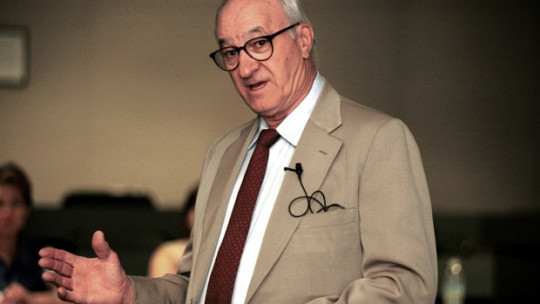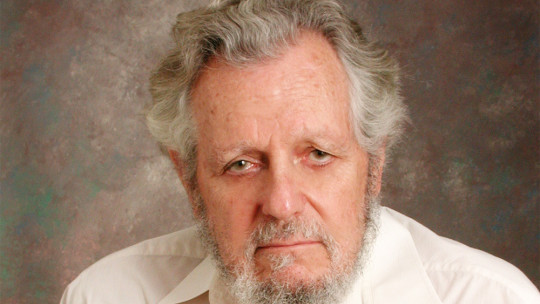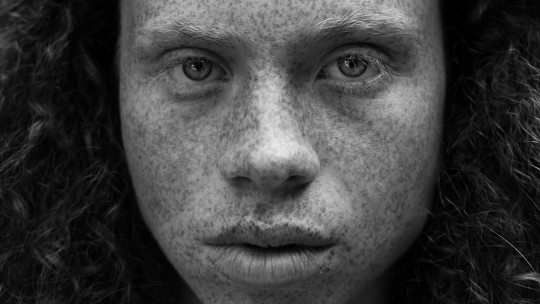
The psychologist and theorist Albert Bandura was born in Canada at the end of 1925. About to enter the ’50s, Bandura graduated in Psychology from Columbia University.
Given his brilliant record, in 1953 he began teaching at the prestigious Stanford University. Years later, Bandura held the position of president at APA (American Psychological Association).
His theories are still valid today, and in Psychology and Mind We have already echoed some of them:
The Theory of Personality: background and context
He behaviorism It is a school of Psychology that emphasizes the importance of experimental methods and tries to analyze observable and measurable variables. Therefore, it also tends to reject all aspects of psychology that cannot be grasped, everything subjective, internal and phenomenological.
The usual procedure used by experimental method It is the manipulation of certain variables, to later assess the effects on another variable. Following this conception of the human psyche and the tools available to evaluate personality, Albert Bandura’s Personality Theory gives greater relevance to the environment as the genesis and key modulator of the behavior of each individual.
A new concept: reciprocal determinism
During his first years as a researcher, Albert Bandura specialized in the study of the phenomenon of aggression in adolescents. He soon realized that, although the observable elements were crucial when establishing solid and scientific bases for the study of certain phenomena, and without giving up the principle that it is the environment that causes human behavior, another reflection was also worth making. .
The environment causes the behavior, certainly, but behavior also causes environment . This quite innovative concept was called reciprocal determinism: material reality (social, cultural, personal) and individual behavior cause each other.
Psychological processes complete the equation (from behaviorism to cognitivism)
Months later, Bandura went a step further and began to value personality as a complex interaction between three elements: environment, behavior and abilities. individual psychological processes These psychological processes include the human capacity to retain images in the mind and aspects related to language.
This is a key aspect to understand Albert Bandura, since by introducing this last variable he abandons orthodox behaviorist postulates and begins to approach the cognitivism In fact, Bandura is currently considered one of the fathers of cognitivism.
By adding imagination and aspects related to language to his understanding of human personality, Bandura draws on much more complete elements than pure behaviorists, such as BF Skinner. Thus, Bandura will analyze crucial aspects of the human psyche: the observational learning (also called modeling) and self-regulation
Observational learning (modeling)
Of the numerous studies and investigations carried out by Albert Bandura, there is one that was (and continues to be) the object of special attention. The studies on the silly doll The idea arose from a video recorded by one of her students, where a girl repeatedly hit an inflatable egg-shaped doll called “Bobo.”
The girl mercilessly beat the doll, while shouting “stupid!” She hit him, both with punches and with a hammer, and she accompanied these aggressive actions with insults. Bandura showed the video to a group of children at a daycare center, who enjoyed the video. Later, after the video session was over, the children were led to a playroom, where a new silly doll and small hammers awaited them. Obviously, Bandura and his collaborators were also in the room, analyzing the behavior of the offspring.
Children It didn’t take them long to grab the hammers and start hitting the silly doll, mimicking the insults of the girl in the video Thus, shouting “stupid!”, they copied all the ‘misdeeds’ they had seen minutes before.
Although the conclusions of this experiment may not seem very surprising, they served to confirm several things: the children changed their behavior without any reinforcement directed at performing that behavior. This will not be an extraordinary reflection for any parent or teacher who has shared time with children, but nevertheless it is created a schism regarding behavioral learning theories
Bandura called this phenomenon “learning by observation” (or modeling). You can learn about his theory of learning through this summary:
“Albert Bandura’s Social Learning Theory”
Modeling: analyzing its components
Attention, retention, reproduction and motivation
The systematic study and variations of the booby doll test allowed Albert Bandura to establish the different steps involved in the modeling process
1. Attention
If you want to learn anything, you must pay attention Likewise, all the elements that represent an obstacle to paying the maximum possible attention will result in worse learning.
For example, if you are trying to learn something but your mental state is not ideal (because you are half asleep, you feel unwell, or you have taken drugs), your degree of acquisition of new knowledge will be affected. The same thing happens if you have distracting elements.
The object for which we pay attention also has certain characteristics that can attract more (or less) our attentional focus.
2. Retention
No less important than paying adequate attention, it is be able to retain (remember, memorize) what we are studying or trying to learn. It is at this point where language and imagination play an important role: we retain what we have seen in the form of images or verbal descriptions.
Once we have saved the knowledge, images and/or descriptions in our mind, we are able to consciously remember that data, so that we can reproduce what we have learned and even repeat it, modulating our behavior.
3. Playback
When we get to this step, we must be able to decode retained images or descriptions so that they can help us change our behavior in the present.
It is important to understand that, when learning to do something that requires mobilization of our behavior, we must be able to reproduce the behavior. For example, you can spend a week watching ice skating videos, but not even be able to put on skates without falling to the ground. You don’t know how to skate!
But if, on the other hand, you do know how to ice skate, it is likely that repeatedly watching videos in which skaters better than you perform jumps and pirouettes will result in an improvement in your skills.
It is also important, with respect to reproduction, to know that our ability to imitate behaviors gradually improves the more we practice the skills involved in a given task. Furthermore, our abilities tend to improve simply by imagining ourselves performing the behavior. This is what is known as “Mental Training” and is widely used by athletes to improve their performance.
4. Motivation
The motivation It is a key aspect when learning those behaviors that we want to imitate. We must have reasons and motives to want to learn something, otherwise it will be more difficult to focus attention, retain and reproduce these behaviors.
According to Bandura, the most frequent reasons why we want to learn something are:
These three reasons are linked to what psychologists have traditionally considered as the elements that “cause” learning. Bandura explains that such elements are not so much the “causes” as the “reasons” for wanting to learn. A subtle but relevant difference.
Of course, the negative motivations They can also exist, and they push us not to imitate certain behavior:
Self-regulation: another key to understanding human personality
The self-regulation (that is, the ability to control, regulate and model our own behavior), is the other fundamental key to personality. In his theory, Bandura points to these three steps towards self-regulation:
1. Self-observation
We perceive ourselves, we evaluate our behavior and this serves to establish a coherent corpus (or not) of what we are and do.
2. Judgment
We compare our behaviors and attitudes with certain standards For example, we often compare our actions with those that are culturally acceptable. Or we are also capable of creating new acts and habits, such as going for a run every day. Additionally, we can instill in ourselves the value of competing with others, or even with ourselves.
3. Auto-response
If in the comparison we make with our standards we come out well, we give ourselves positive reward responses to ourselves. In case the comparison makes us uncomfortable (because we do not conform to what we believe would be correct or desirable), we give ourselves punishment responses These responses can range from the most purely behavioral (staying late working or asking the boss for forgiveness), to more emotional and covert aspects (feeling of shame, self-defense, etc.).
One of the important elements in Psychology that serve to understand the self-regulation process is self-concept (also known as self-esteem). If we look back and realize that we have acted throughout our lives more or less in accordance with our values and we have lived in an environment that has given us rewards and praise, we will have a good self-concept and therefore high self-esteem. Conversely, if we have been unable to live according to our values and standards, it is likely that we have a poor self-concept, or low self-esteem.
Recapping
Albert Bandura and his Theory of Personality based on the behavioral and cognitive aspects involved in learning and acquiring behaviors had a great impact on personality theories and psychological therapy. His thesis, which was based on behaviorist postulates but embraced innovative elements that made it possible to better explain the phenomena concerning human personality, earned him wide recognition in the scientific community.
His approach to personality was not merely theoretical but prioritized action and solutions to practical problems linked, above all, to learning in childhood and adolescence, but also to other important fields.
Scientific Psychology seemed to have found in behaviorism, at the time when Bandura was taking his first steps as a teacher, a privileged place within the academic world, where the basis of knowledge is extracted through measurable studies. Behaviorism was the approach preferred by the vast majority, since it was based on what was observable and left aside the mental or phenomenological aspects, which were not observable and therefore did not fit into the scientific method.
However, at the end of the 60s and thanks to leading figures such as Albert Bandura, behaviorism gave way to the “cognitive revolution.” The cognitive psychology It combines the experimental and positivist orientation of behaviorism, but without hijacking the researcher in the study of externally observable behaviors, since it is precisely the mental life of people that must always remain in the orbit of what Psychology tries to investigate.








